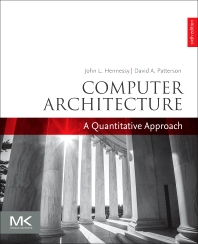Books in Hardware and architecture general
Books in Hardware and architecture general

Advances in Fog Computing and the Internet of Things for Smart Healthcare
- 1st Edition
- Joseph Bamidele Awotunde + 3 more
- English

Energy-Efficient Devices and Circuits for Neuromorphic Computing
- 1st Edition
- Farooq Ahmad Khanday
- English

Computer Architecture
- 7th Edition
- John L. Hennessy + 2 more
- English

RISC-V System-on-Chip Design
- 1st Edition
- David Harris + 3 more
- English

Iris and Periocular Recognition using Deep Learning
- 1st Edition
- Ajay Kumar
- English

Embedded System Design
- 1st Edition
- Lawrence J. Henschen + 1 more
- English

Digital Design and Computer Architecture, RISC-V Edition
- 1st Edition
- Sarah Harris + 1 more
- English

Thinking Machines
- 1st Edition
- Shigeyuki Takano
- English

Computer Architecture
- 6th Edition
- John L. Hennessy + 1 more
- English

The Physics of Computing
- 1st Edition
- Marilyn Wolf
- English